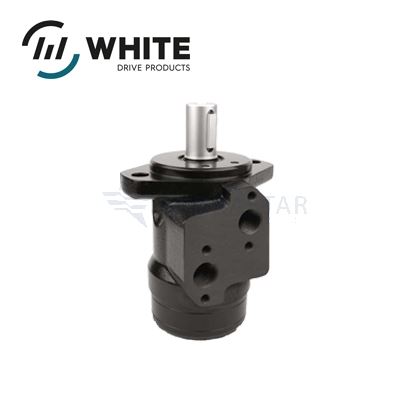A hydraulic motor turns hydraulic energy into mechanical energy. Hydraulic motors produce an impressive force output / power ratio for their size, making them suitable for a wide range of vehicles, machines and industrial plant.
It’s important to choose a hydraulic motor according to your hydraulic system requirements. Things to consider are:
- Load
- Operating pressure
- Speed
- Serviceability
Hydraulic motors are classified as either high speed and low torque or low speed and high torque.
Hydraulic Motor Components
Hydraulic motors vary in design and function but all share 4 components.
1) Gear – Gears rotate when the hydraulic fluid enters the motor. The motor output shaft, when connected with one of the gears, produces rotary motion.
2) Vane – A vane shifts in and out of the central rotor connected to the output shaft. The output shaft starts rotating when hydraulic fluid touches the vane.
3) Bent-Axis Piston – The motor has a variable or fixed displacement with high speeds and high efficiency.
4) Radial Piston – Pistons are located perpendicularly to the output shaft. Once the hydraulic fluid flows into the motor, the pistons rotate the cam.
Hydraulic Motor Features
All common types of hydraulic motor have the same design features:
- Driving surface depending on the pressure differential
- An ability to time the porting of pressure fluid to the surface to get continuous rotation
- Mechanical connection of the surface area and output shaft
The following hydraulic motor features should be considered when choosing the right motor for your needs.
- Motor displacement – The volume of fluid the motor needs to achieve in one revolution of the motor output shaft. Common motor displacement units are in³ or cm³. Displacement can either be fixed (constant torque and varied speed) or variable (variable torque and varied speed).
- Torque output – Motor torque ratings depend on specific pressure drop across the motor. The measurements are expressed in in/lb. or ft./lb.
- Breakaway torque – The torque needed to turn a stationary load. A motor needs more torque to move a load initially than to continue moving it.
- Running torque – The torque needed to keep the load moving.
- Starting torque – Torque needed for a hydraulic motor to start the load. Usually, it’s lower than the motor’s running torque.
- Motor speed – The volume of fluid delivered and the motor displacement. Maximum motor speed is based on the maximum inlet pressure the motor can sustain for a set time without incurring damage. Minimum motor speed is the slowest rotational speed given by the motor output shaft.
- Slippage – The amount of fluid passing through the motor without being involved in the working process.
Find Out More
At Hydrastar, we offer a wide selection of hydraulic motors and hydraulic motor parts, as well as other products to keep your equipment working flawlessly. Give us a call today to request a quote.



